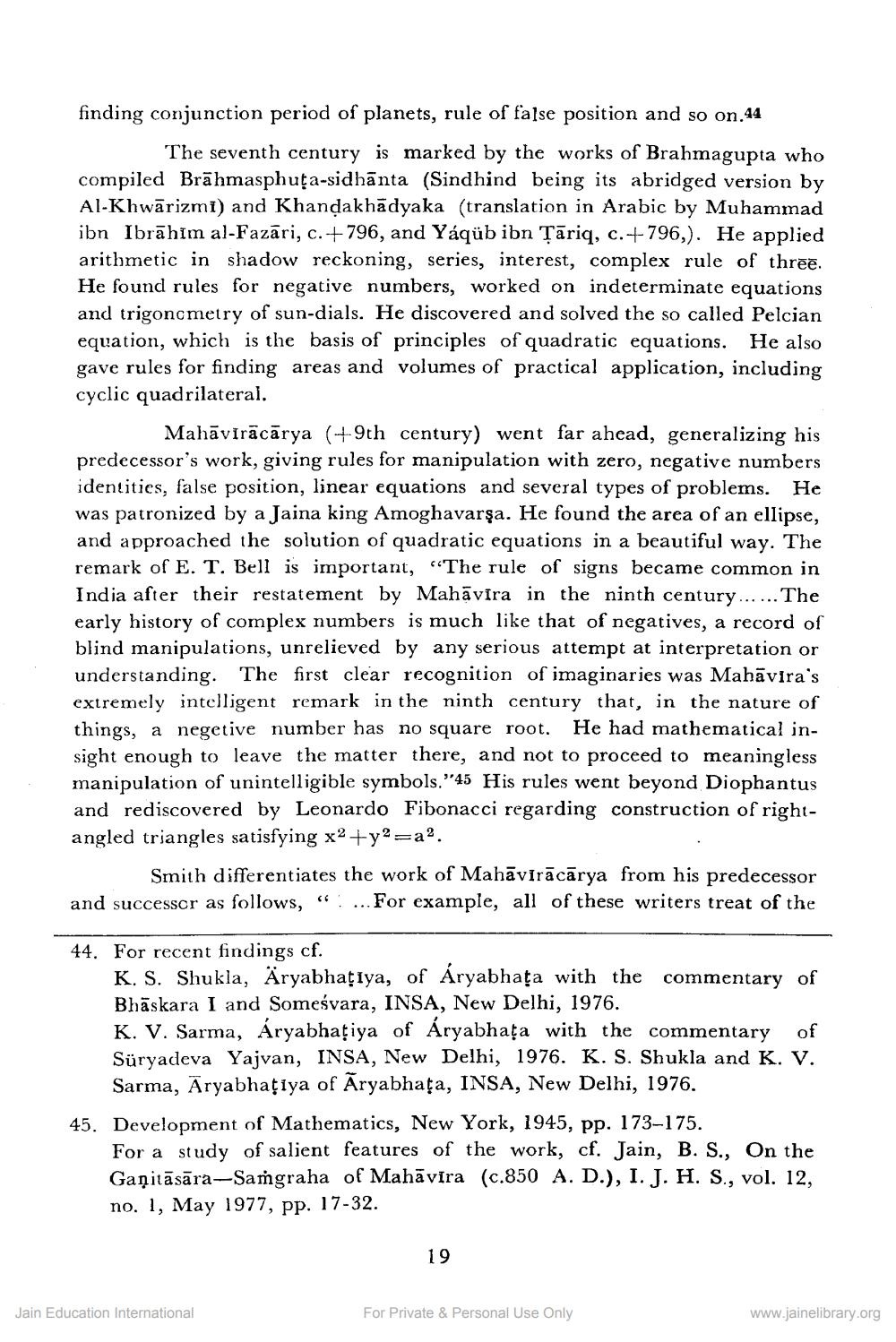________________
finding conjunction period of planets, rule of false position and so on.44
The seventh century is marked by the works of Brahmagupta who compiled Brāhmasphuţa-sidhānta (Sindhind being its abridged version by Al-Khwārizmi) and Khandakhādyaka (translation in Arabic by Muhammad ibn Ibrāhim al-Fazāri, c. +796, and Yáqüb ibn Tariq, c.+796,). He applied arithmetic in shadow reckoning, series, interest, complex rule of three. He found rules for negative numbers, worked on indeterminate equations and trigoncmetry of sun-dials. He discovered and solved the so called Pelcian equation, which is the basis of principles of quadratic equations. He also gave rules for finding areas and volumes of practical application, including cyclic quadrilateral.
Mahāvīrācārya (1.9th century) went far ahead, generalizing his predecessor's work, giving rules for manipulation with zero, negative numbers identities, false position, linear equations and several types of problems. He was patronized by a Jaina king Amoghavarşa. He found the area of an ellipse, and approached the solution of quadratic equations in a beautiful way. The remark of E. T. Bell is important, “The rule of signs became common in India after their restatement by Mahāvīra in the ninth century... ... The early history of complex numbers is much like that of negatives, a record of blind manipulations, unrelieved by any serious attempt at interpretation or understanding. The first clear recognition of imaginaries was Mahavira's extremely intelligent remark in the ninth century that, in the nature of things, a negetive number has no square root. He had mathematical insight enough to leave the matter there, and not to proceed to meaningless manipulation of unintelligible symbols."'45 His rules went beyond Diophantus and rediscovered by Leonardo Fibonacci regarding construction of rightangled triangles satisfying x2 +y2=a?.
Smith differentiates the work of Mahāvīrācārya from his predecessor and successor as follows, “: ... For example, all of these writers treat of the
44. For recent findings cf.
K. S. Shukla, Aryabhatiya, of Aryabhata with the commentary of Bhāskara I and Someśvara, INSA, New Delhi, 1976. K. V. Sarma, Aryabhatiya of Aryabhata with the commentary of Süryadeva Yajvan, INSA, New Delhi, 1976. K. S. Shukla and K. V.
Sarma, Aryabhatiya of Aryabhata, INSA, New Delhi, 1976. 45. Development of Mathematics, New York, 1945, pp. 173–175.
For a study of salient features of the work, cf. Jain, B. S., On the Ganitāsāra-Samgraha of Mahavira (c.850 A. D.), I.J. H. S., vol. 12, no. 1, May 1977, pp. 17-32.
19
Jain Education International
For Private & Personal Use Only
www.jainelibrary.org




